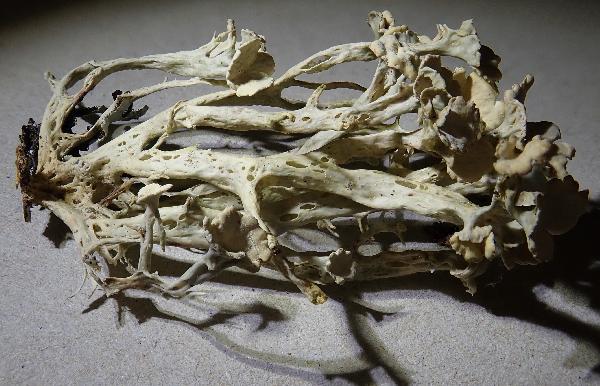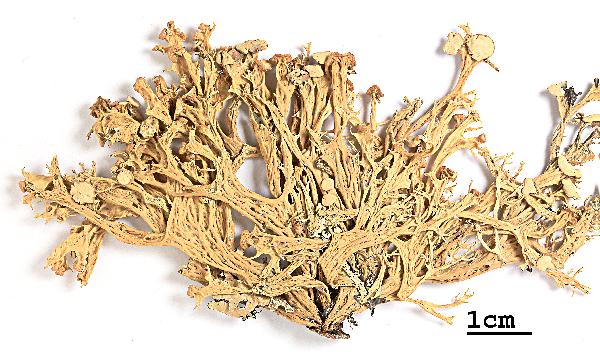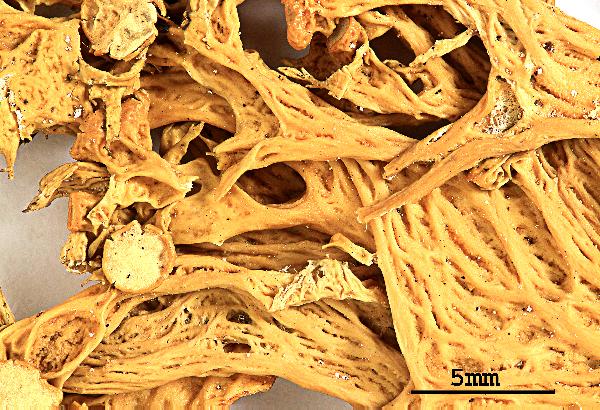Ramalina elegans (Bagl. & Carestia) Stizenb.
Jahresber. Naturf. Ges. Graubündens, n.F. 34: 91, 1891. Basionym: Ramalina calicaris var. elegans Bagl. & Carestia - Atti Soc. Critt. Ital., 2: 159, 1880.
Synonyms:
Distribution: N - TAA, Piem (Isocrono & al. 2004). C - Abr.
Description: Thallus fruticose, pale yellowish green, to 5 cm tall, erect to ascending, firmly attached by a basal holdfast, richly dichotomously branched, forming shrubby, markedly rigid (also when wet) tufts. Branches usually compressed and partly fistulose-inflated, 1-2(-3) mm wide at base, the sterile ones often pointed and sometimes blackened at apex, with scattered perforations and rarely with a few linear pseudocyphellae. Cortex 2-layered, the outer part paraplectenchymatous, moderately thick, the inner part with chondroid strands; medulla white, very lax, especially below the apothecia. Apothecia frequent, lecanorine, with a greenish disc and a thin, smooth thalline margin, mostly terminal or subterminal on smaller branches, subtended by a short, pointed spur, the margins curved inwards. Epithecium pale olive; hymenium and hypothecium colourless; paraphyses thick-walled, richly branched in upper part. Asci 8-spored, the apical dome K/I+ dark blue with a pale, conical-pointed apical cushion (axial mass), the wall I-, but the thin outer gel I+ blue, Bacidia-type. Ascospores 1-septate, hyaline, straight or curved, 11-16(-17) x (4-)5-7 µm. Photobiont: chlorococcoid. Spot tests: cortex and medulla K-, C-, KC- (or cortex KC+ faintly yellow), P-, UV-. Chemistry: cortex with usnic acid; medulla with homosekikaic and sekikaic acids. Note: on bark of old deciduous trees, more rarely on conifers, in very humid, open montane forests; a lichen which deserves further study. It was included in the Italian red list of epiphytic lichens as “Data Deficient” (Nascimbene & al. 2013c).
Growth form: Fruticose
Substrata: bark
Photobiont: green algae other than Trentepohlia
Reproductive strategy: mainly sexual
Poorly known taxon in need of further study
Commonnes-rarity: (info)
Alpine belt: absent
Subalpine belt: extremely rare
Oromediterranean belt: absent
Montane belt: extremely rare
Submediterranean belt: absent
Padanian area: absent
Humid submediterranean belt: absent
Humid mediterranean belt: absent
Dry mediterranean belt: absent
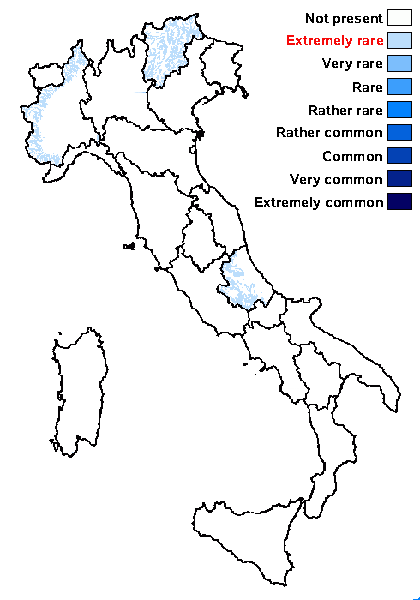
Predictive model
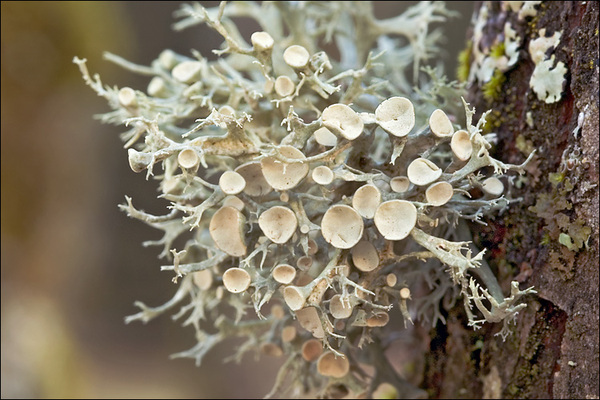
Dr. Amadej Trnkoczy; Owner: Dr. Amadej Trnkoczy – From Calphotos http://calphotos.berkeley.edu/cgi/img_query?enlarge=0000+0000+1208+1010 2008-11-05
Slovenia, Zapodn place, Zadnja Trenta valley, the meadow next to Fijori farm house, altitude 960 m (3,150 feet), alpine phytogeographical region, East Julian Alps
Growth form: Fruticose
Substrata: bark
Photobiont: green algae other than Trentepohlia
Reproductive strategy: mainly sexual
Poorly known taxon in need of further study
Commonnes-rarity: (info)
Alpine belt: absent
Subalpine belt: extremely rare
Oromediterranean belt: absent
Montane belt: extremely rare
Submediterranean belt: absent
Padanian area: absent
Humid submediterranean belt: absent
Humid mediterranean belt: absent
Dry mediterranean belt: absent

Predictive model

 INDEX FUNGORUM
INDEX FUNGORUM
 GBIF
GBIF
 DOLICHENS
DOLICHENS

